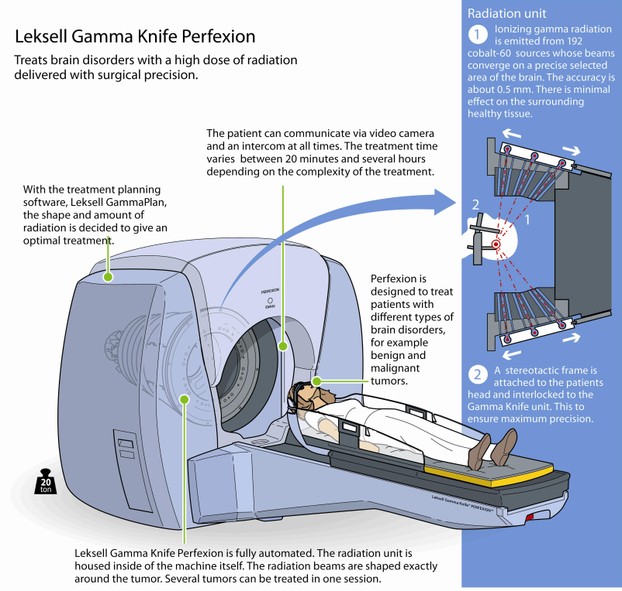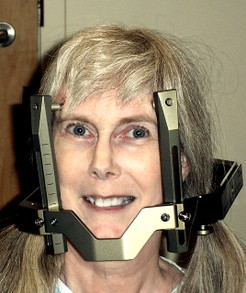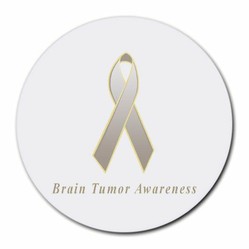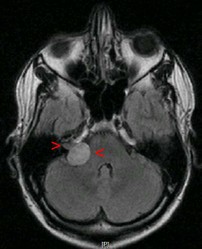My first question was, “Are you absolutely sure it's not cancer?” and he said it definitely was not. But he went on to say that it could cause other symptoms, including a loss of feeling on one side of my face, the unilateral hearing loss I had been experiencing, ringing in that ear (tinnitis) and vertigo. My tinnitis was more like a buzzing that never quit, and not loud enough at that time to be a bother, but the vertigo was a new symptom that had begun just a few months earlier. I had no idea they were all related.
Since they tend to grow slowly, acoustic neuromas often cause few problems, but if they put on an unexpected growth spurt, they can cause death by compressing the brain. My options were to wait and see what happened and have annual MRIs, or have it treated with radiation or have it physically removed.
While I was shocked by the diagnosis, I was also relieved. I had been having trouble with my balance for a few months. I would suddenly tip to one side, stagger a couple of steps every now and then, bang into door frames and even run into people when walking past them. Now I knew why. I had an alien in my head! It was about the size and shape of a jelly bean, and it was putting pressure on the eighth cranial nerve, preventing most of the sound that hit my eardrum from reaching my brain. It was also why I kept losing my balance.
While doctors insist this is not one of the symptoms, another problem I was having was with my typing. As a journalist with well over 20 years of experience, typing was essential, but in a few months, I had gone from being a very clean typist with few errors to producing copy that was full of mistakes. And not just typos, either. Weird errors were creeping in — wrong locations, wrong names, wrong dates, the sorts of errors I just hadn't made before. When I changed the location of a meeting to an entirely different town in one story and switched mayors in another, I knew I was in real trouble. It was frightening. However, after I joined an on-line group hosted by the Acoustic Neuroma Association of Canada (ANAC) for people with acoustic neuromas, I discovered that this was a very common problem. Other people who previously had no problems writing and typing were having trouble with these skills, just like I was. Regardless of what the doctors said, these mistakes somehow seemed to be related to the presence of this kind of tumor.










 Versatile Nova Scotia Duck Tolling Retrieverson 08/02/2014
Versatile Nova Scotia Duck Tolling Retrieverson 08/02/2014
 Should You Spay or Neuter Your Puppy?on 08/12/2014
Should You Spay or Neuter Your Puppy?on 08/12/2014
 Horse Racing History: the Preakness Stakeson 05/15/2014
Horse Racing History: the Preakness Stakeson 05/15/2014
 Dinosaurs Will Be On Display in Trenton, Ontario, Canadaon 07/29/2013
Dinosaurs Will Be On Display in Trenton, Ontario, Canadaon 07/29/2013



Comments
After my comment on your other page, I found this one. Yes! This is what my son chose to do also. The surgery would have been very difficult and dangerous because his tumor was wrapped around a large vein. His wife sent me a photo of him in this type of headgear you show here. It's wonderful there are such advancements to offer this type of treatment.
And lucky you to not have a huge bill afterward.
Wow, you had to endure a lot. I'm so glad you were able to get treatment and are doing well now.